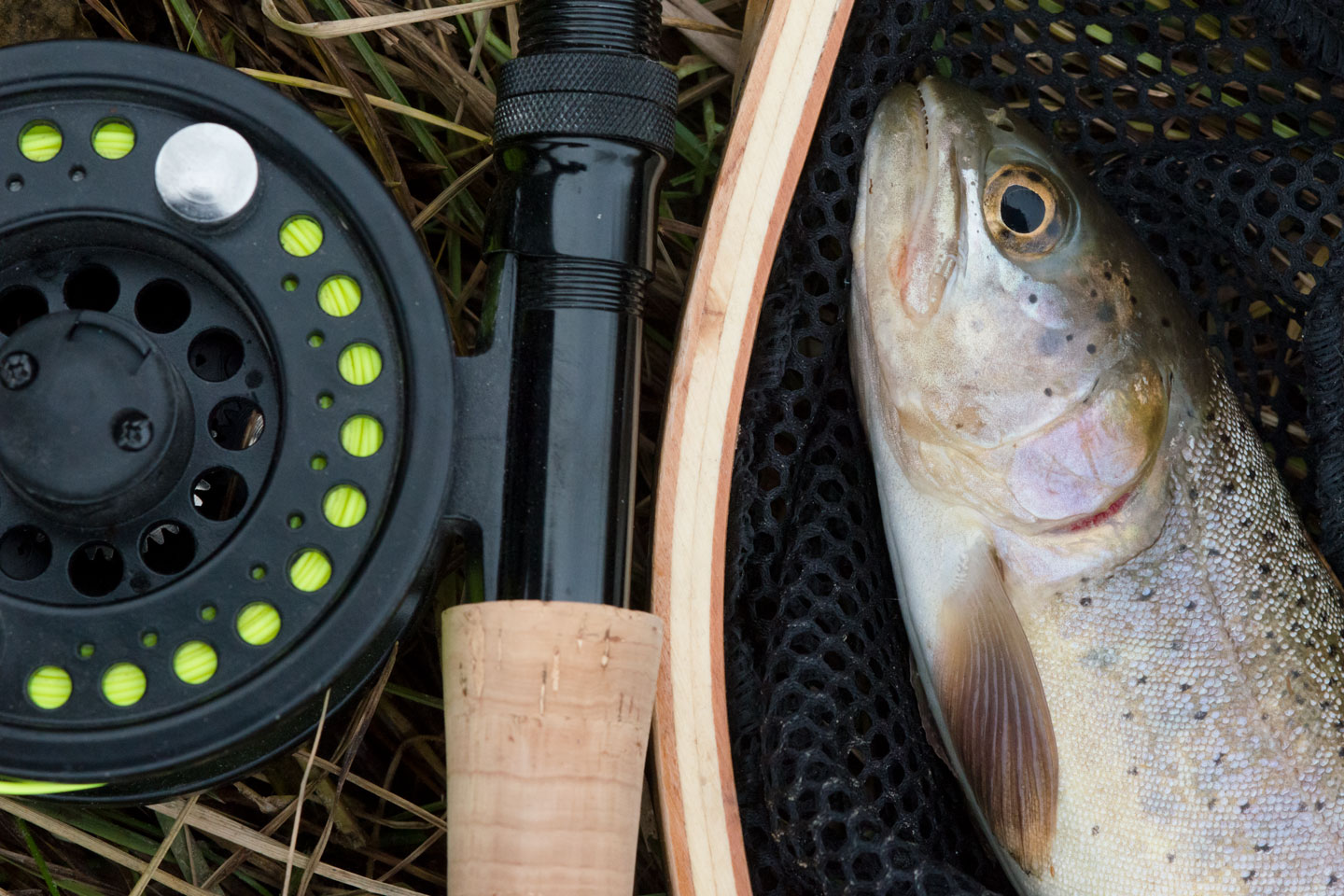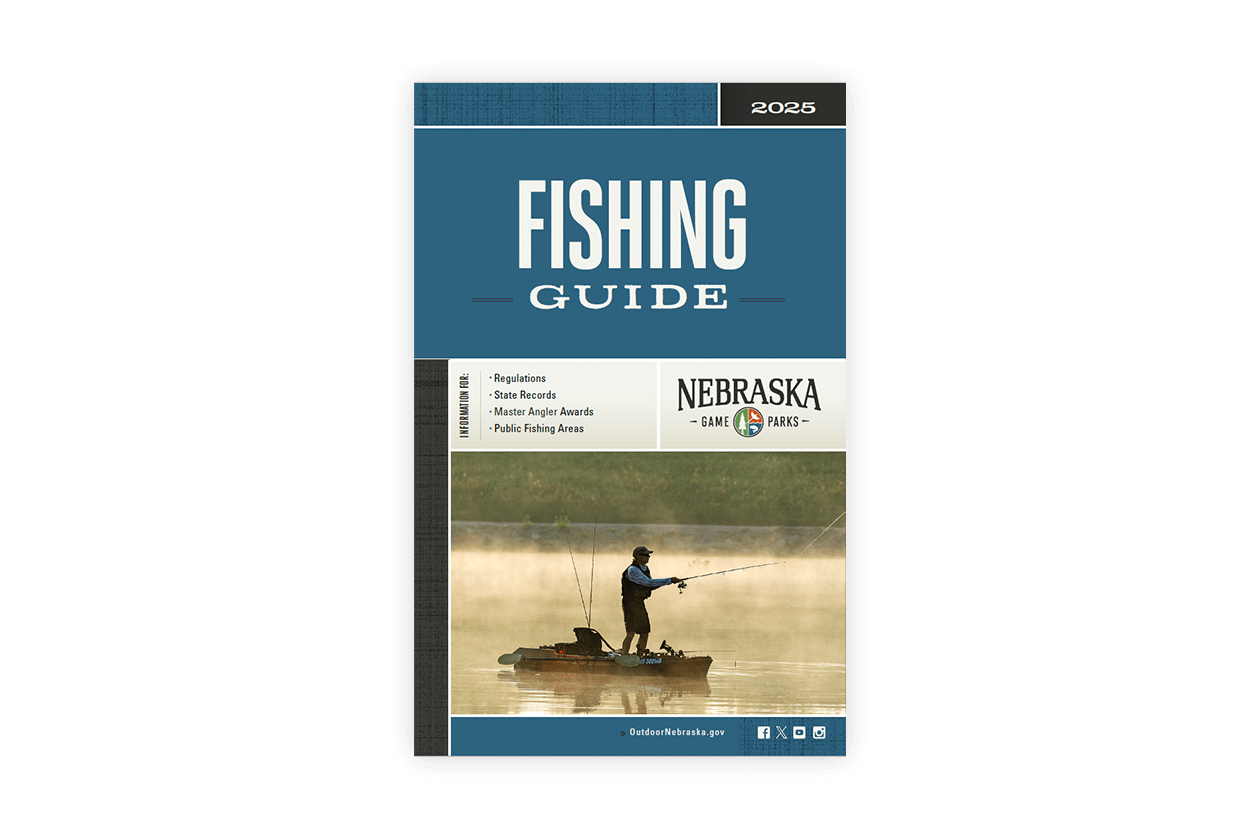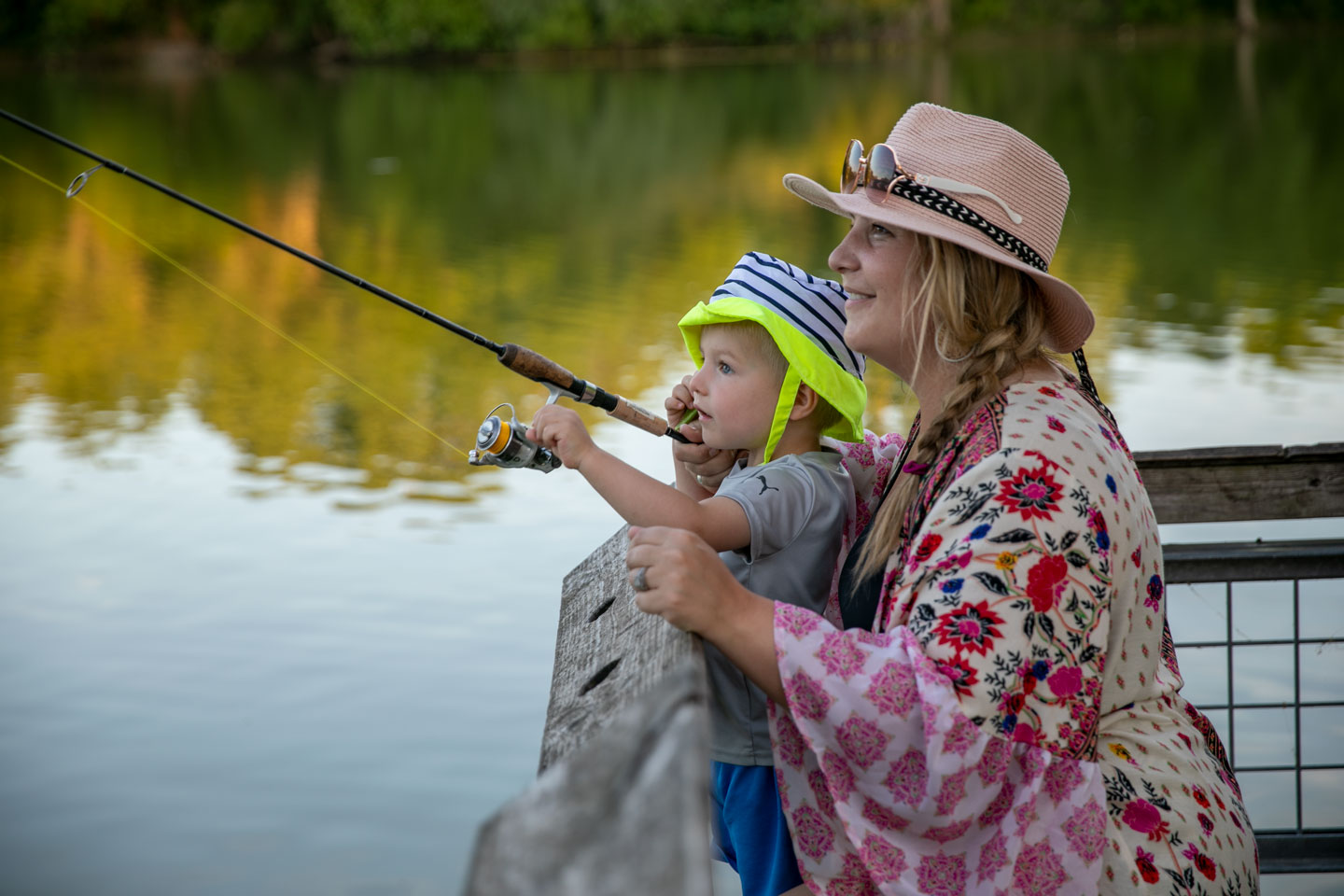Perch ID
Percina maculata
Description: Slender darter with a complete lateral line. Large, oval to roundish dark blotches on the side, blotches are connected to each other.
Family: Perch
Type: Non-Game Fish
Range: Was considered extirpated in Nebraska until specimens were discovered in recent years in the Missouri River. Most likely to be found in the Missouri River in northeast Nebraska or perhaps in small tributaries that empty into that stretch of river.
Etheostoma exile
Description: A small, tubular, olivaceous colored fish having blotches or vertical bars on sides; 2 separate dorsal fins; no visible teeth; relatively large, fan-shaped pectoral fins; incomplete lateral line; and with opercles and cheeks more or less scaled. Often mistaken for walleye or sauger by bait seiners. Spawning males are very brilliant with red spots on sides and with blue and red bands across dorsal fins. It is a bottom dweller, prefers clear, vegetated sloughs and streams – thriving in highly organic pools of low gradient streams. It has an absent or much reduced swimbladder; when it stops swimming, it sinks to the bottom and the current presses against the enlarged pectoral fins, holding it in place. They move about by a series of short, quick dashes (darting). Diet primarily consists of small crustaceans and immature aquatic insects.
Family: Perch
Type: Non-Game Fish
Range: Mainly north central streams (Loup, Elkhorn, and Niobrara drainages); some in the Platte drainages.
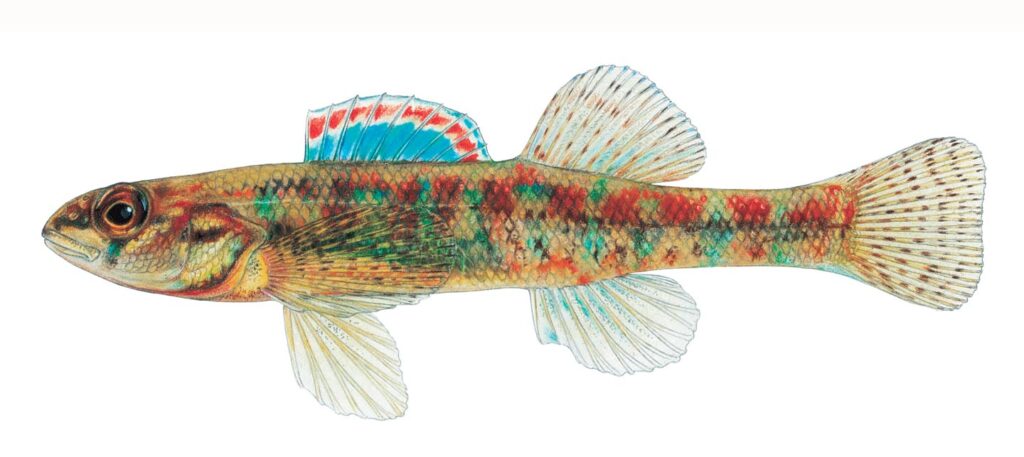
Etheostoma nigrum
Description: A small, tubular, straw-colored fish having 2 separate dorsal fins; no visible teeth; relatively large, fan-shaped pectoral fins; small W-and X-shaped markings scattered over back and sides; a complete lateral line; and a dark bar extending from eye but broken on tip of snout. Often mistaken for young walleye or sauger by bait seiners. It is a bottom dweller, prefers quiet pools rather than riffles. Although it is our darter that is most tolerant to turbidity, it “avoids” streams that are silt laden or of high gradient. It has an absent or much reduced swimbladder; when it stops swimming, it sinks to the bottom and the current presses against the enlarged pectoral fins, holding it in place. Moves from place to place by a series of short, quick dashes (darting). Diet primarily consists of small crustaceans and immature aquatic insects.
Family: Perch
Type: Non-Game Fish
Range: Nemahas (locally common), Platte, Loup, Elkhorn, Niobrara, and Little Blue drainages. Range is declining due to siltation.
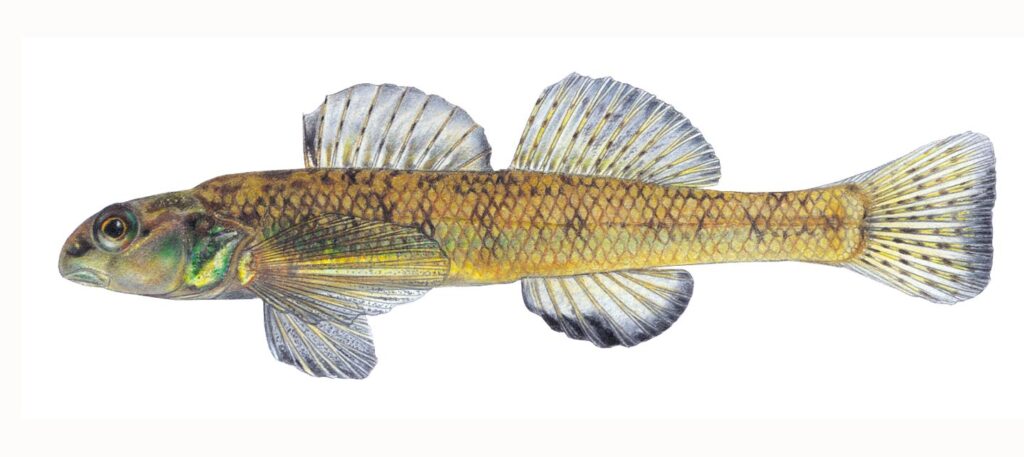
Etheostoma spectabile
Description: A small, tubular, olivaceous fish having 2 separate dorsal fins; no visible teeth; relatively large, fan-shaped pectoral fins; an incomplete lateral line; scaleless opercles; and cheeks may or may not have scales. Spawning males are very colorful – having about 10 blue blotches or vertical bars on sides with blue and/or red on all fins except the tail. It is a bottom dweller – primarily a riffle fish in clear streams and springs, or it can be found in pools that contain enough current to keep gravelly and rocky substrates free of silt. It has an absent or much reduced swimbladder; when it stops swimming, it sinks to the bottom and the current presses against the enlarged pectoral fins, holding it in place. It moves about by a series of short, quick dashes (darting). Diet mainly consists of immature aquatic insects.
Family: Perch
Type: Non-Game Fish
Range: Very common in the Frenchmen, Republican and lower Little Blue drainages; also found in North Platte (Lodgepole Creek), Loup, Niobrara, and Big Blue drainages.
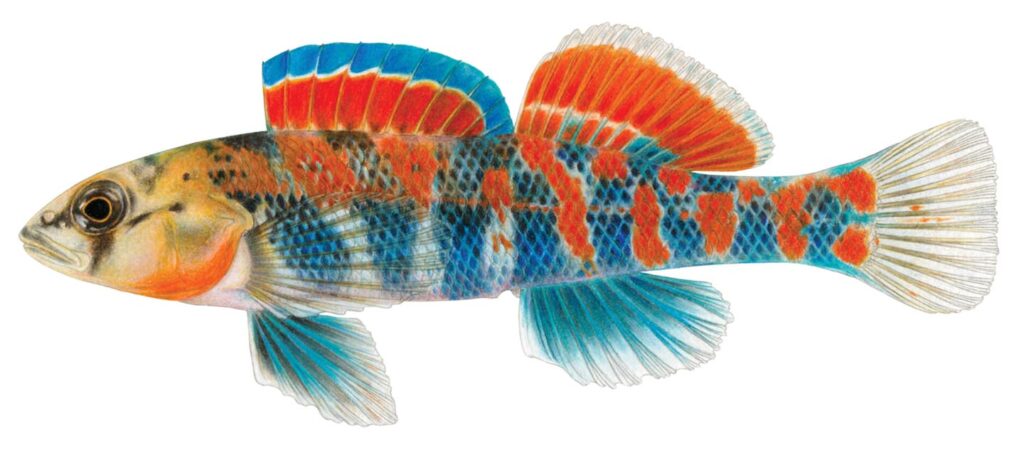
Sander canadensis
Description: Tubular-shaped fish having 2 separate dorsal fins with membranes (webbing) of spinous dorsal having rows of black spots; large, prominent teeth; back and sides with dark bars/blotches; and a prominent dark blotch at base of each pectoral fin. It is more of a stream/river fish than walleye, commonly found in strong currents, and is also more tolerant of high turbidity. Their eyes may even be more adapted to low-light conditions than walleye, perhaps accounting for its greater tolerance of turbidity that partially blocks out sunlight. Sauger feed almost exclusively on fish and can hybridize with walleye, producing a saugeye.
Family: Perch
Type: Sport Fish
Range: Missouri, lower Platte, Elkhorn and Niobrara rivers and a few selected reservoirs.
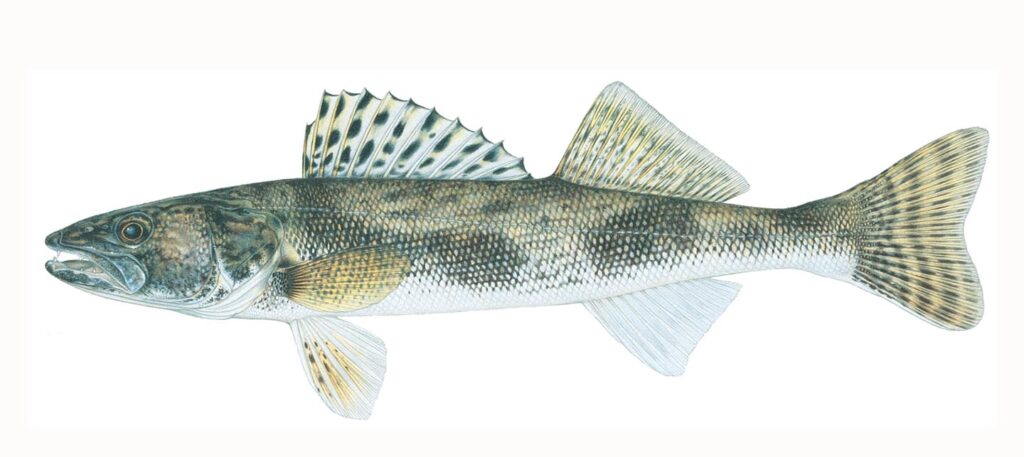
Walleye x Sauger Hybrid
Description: Hybrid between walleye and sauger.
Family: Perch
Type: Sport Fish
Range: Missouri, lower Platte, Elkhorn and Niobrara rivers and a few selected reservoirs.
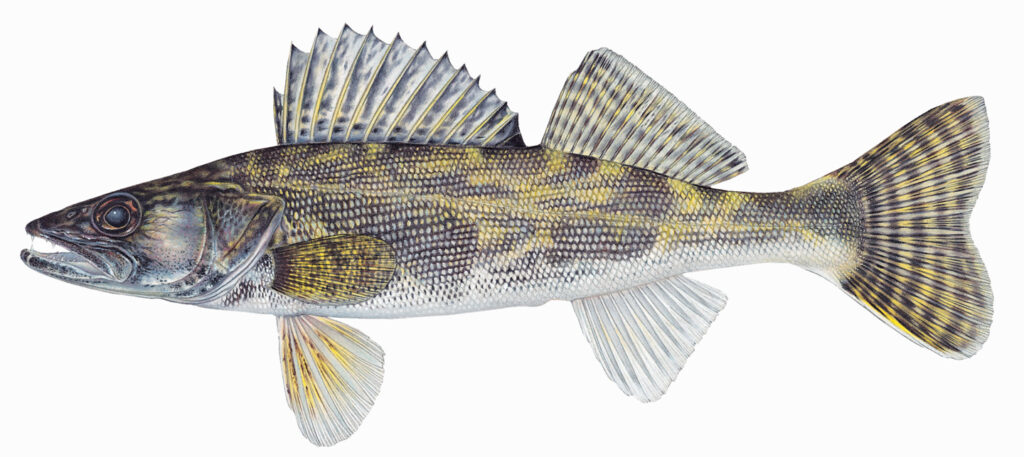
Sander vitreus
Description: Torpedo-shaped fish having 2 separate dorsal fins with membranes (webbing) of spinous dorsal having streaks or blotches (large dark spot at base of last few spines); large, prominent teeth; back and sides without vertical bars; and typically a white margin on lower lobe of tail fin. Walleye are primarily nocturnal predators and largely feed on fish but will also eat insects and crustaceans. Their opaque, luminous eyes are very efficient at gathering available light as they move onto flats or shoal areas in pursuit of prey. They are one of the top 5 commonly sought-after sport fish. Can hybridize with sauger, producing a saugeye.
Family: Perch
Type: Sport Fish
Range: Statewide
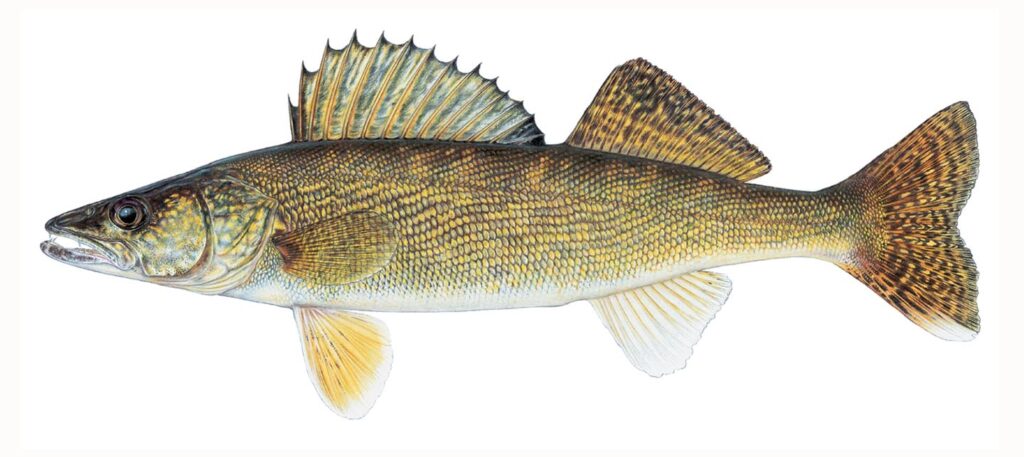
Perca flavescens
Also known as: perch, ring perch
Description: Somewhat tubular, slab-sided fish having 2 separate dorsal fins, regularly spaced vertical bands on body, and no visible teeth. A schooling fish that does best in shallow, well-vegetated lakes in the Sandhills region of the state, but can become stunted if predation is insufficient. During the spawning process, females release eggs in long gelatinous strings, which are fertilized by several males. Egg masses then become attached to underwater cover (emergent plant stems, blown-in tumbleweeds, etc.). Small crustaceans, insects, and fish make up the bulk of the diet.
Family: Perch
Type: Commercial Fish
Range: Prefers coolwater; most common in Sandhills and Panhandle lakes – both natural and man-made.
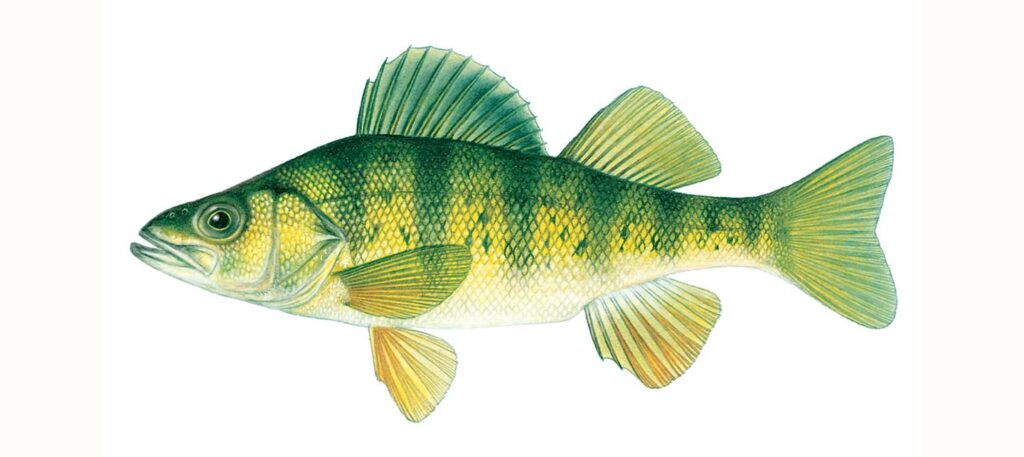
References
The Fishes of Nebraska by Hrabik, et. al (2015)
The Fish Book from NEBRASKAland Magazine (1987)Related Content
Discover other fish species and resources to angling in Nebraska.

